The Most Controversial AI Technologies
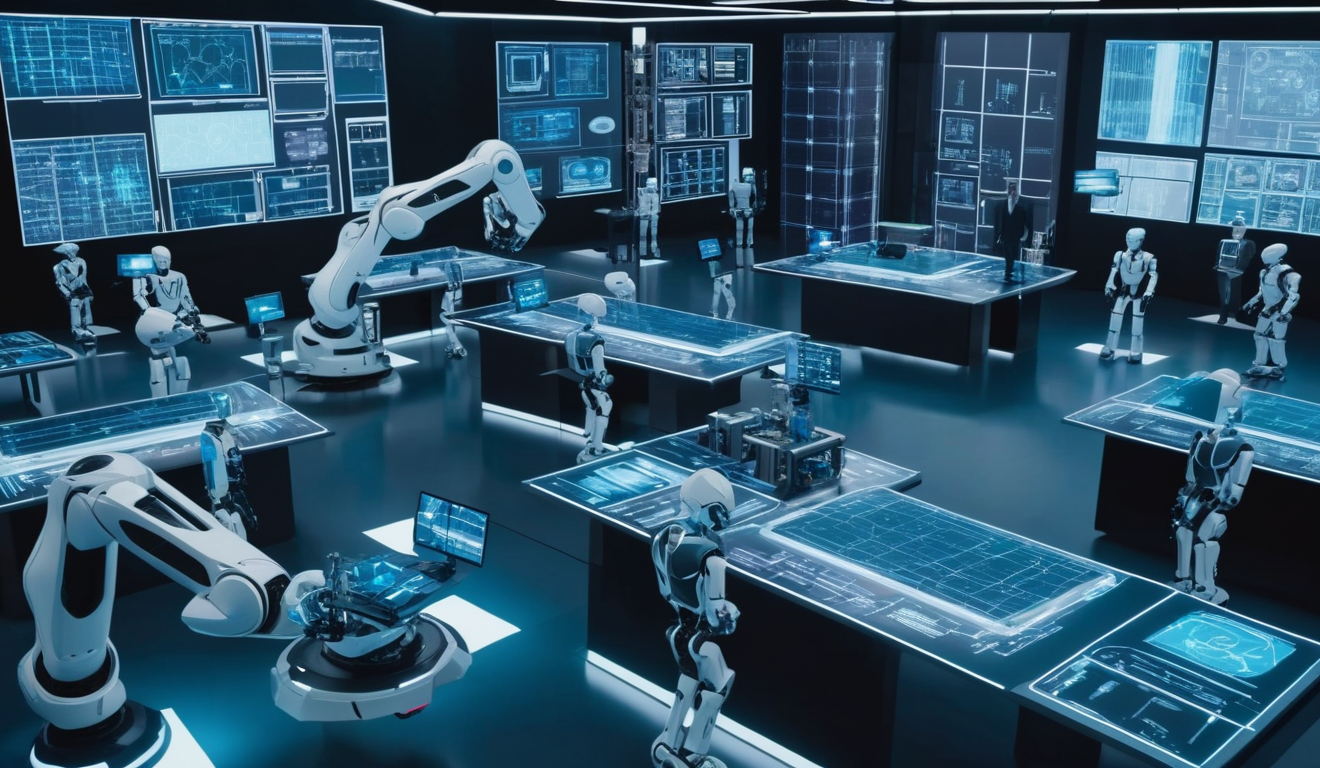
In today’s rapidly evolving technological landscape, artificial intelligence (AI) stands at the forefront of innovation and controversy. As we delve into the most debated AI technologies, we uncover a world teeming with potential benefits and significant drawbacks. These technologies promise to reshape our lives, but they also raise ethical questions and societal concerns that we cannot ignore. From privacy issues to the future of work, the implications of AI are profound and far-reaching.
Consider the implications of facial recognition technology. While it offers enhanced security measures, its use in law enforcement has ignited heated debates about civil liberties. Are we sacrificing our privacy for safety? The potential for misuse in tracking individuals without their consent is alarming. This technology exemplifies the delicate balance between security and personal freedom, a theme that resonates throughout many AI discussions.
Another hot topic is deepfake technology, which allows users to create hyper-realistic fake videos and audio. This innovation can be entertaining, but it also poses severe risks related to misinformation and identity theft. Imagine watching a video of a public figure saying something they never actually said—trust in media could plummet. The erosion of authenticity in our digital world raises critical questions: How do we discern truth from fabrication in an age of advanced AI?
Then there’s the emergence of autonomous weapons. As we develop machines capable of making life-and-death decisions, we face moral dilemmas about accountability. Who is responsible when a machine makes a mistake? The prospect of unregulated warfare driven by AI is terrifying. It’s a slippery slope that could redefine modern conflict.
In the workplace, AI in hiring practices promises efficiency but often perpetuates biases found in historical data. This leads to concerns about fairness and discrimination. Are we truly creating equitable hiring processes, or are we merely automating our prejudices? Transparency in how candidates are evaluated is crucial, yet often lacking.
| AI Technology | Benefits | Drawbacks |
|---|---|---|
| Facial Recognition | Enhanced security | Privacy invasion |
| Deepfake Technology | Entertainment | Misinformation risk |
| Autonomous Weapons | Reduced human risk | Moral accountability issues |
Surveillance technologies powered by AI, such as predictive policing, also spark controversy. While they aim to enhance public safety, they often infringe on civil rights. The debate over the balance between security and personal freedom is ongoing, with many advocating for stricter regulations to protect individual rights.
As we navigate these challenges, it’s essential to consider the role of AI in our daily lives. From social media algorithms that curate our online experiences to AI in healthcare, the impact of these technologies is undeniable. They can improve our lives, but they also require careful scrutiny to ensure ethical use.
Ultimately, as we embrace the future of AI, we must remain vigilant. The conversation around these controversial technologies is not just about what they can do, but what they should do. As we move forward, let’s strive for a balance that respects both innovation and our fundamental rights.
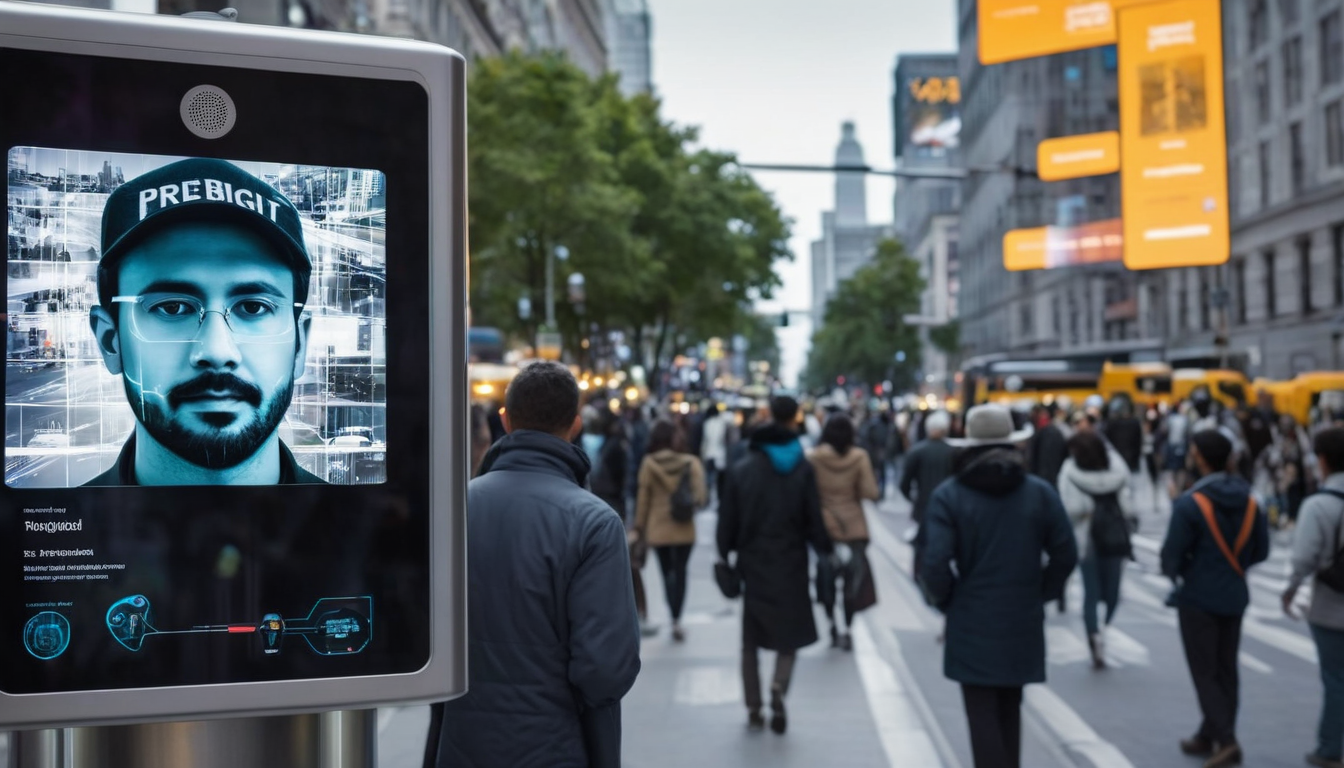
Facial Recognition
Facial recognition technology has rapidly evolved, becoming a double-edged sword in our society. On one hand, it offers significant benefits, such as enhancing security and streamlining processes. For instance, airports use this technology to expedite passenger identification, making travel smoother and safer. However, the other side of the coin reveals a darker truth: privacy concerns that can’t be ignored. As this technology proliferates, it raises crucial questions about our civil liberties and the ethics of surveillance.
Imagine walking down the street and being identified by cameras that track your every move. Sounds like a scene from a sci-fi movie, right? Yet, this is becoming a reality in many places. The implications of using facial recognition in law enforcement are particularly concerning. While it can help catch criminals, it also opens the door for potential misuse, such as:
- Tracking individuals without their consent
- Targeting specific demographics unfairly
- Creating a culture of surveillance that stifles free expression
In a world where technology is advancing at breakneck speed, the ethical implications of facial recognition are hotly debated. A recent study highlighted that over 60% of people surveyed expressed discomfort with the idea of being monitored constantly. This raises the question: at what point does security become an invasion of privacy?
| Pros of Facial Recognition | Cons of Facial Recognition |
|---|---|
| Enhances security measures | Potential for misuse in surveillance |
| Streamlines identification processes | Risks of bias and discrimination |
| Assists in locating missing persons | Undermines civil liberties |
The debate doesn’t end here. Many argue that the lack of regulation surrounding facial recognition technology could lead to a slippery slope where the government and corporations have too much power over individuals. As we integrate these technologies into our daily lives, we must ask ourselves: are we sacrificing our privacy for the sake of security? The answer is not straightforward, and it requires a nuanced discussion among technologists, ethicists, and the public.
In conclusion, while facial recognition technology can offer benefits, we must tread carefully, balancing innovation with ethical considerations. As we navigate this complex landscape, it’s essential to foster conversations about privacy rights and the implications of surveillance. The future of facial recognition will depend on how society chooses to address these pressing issues.
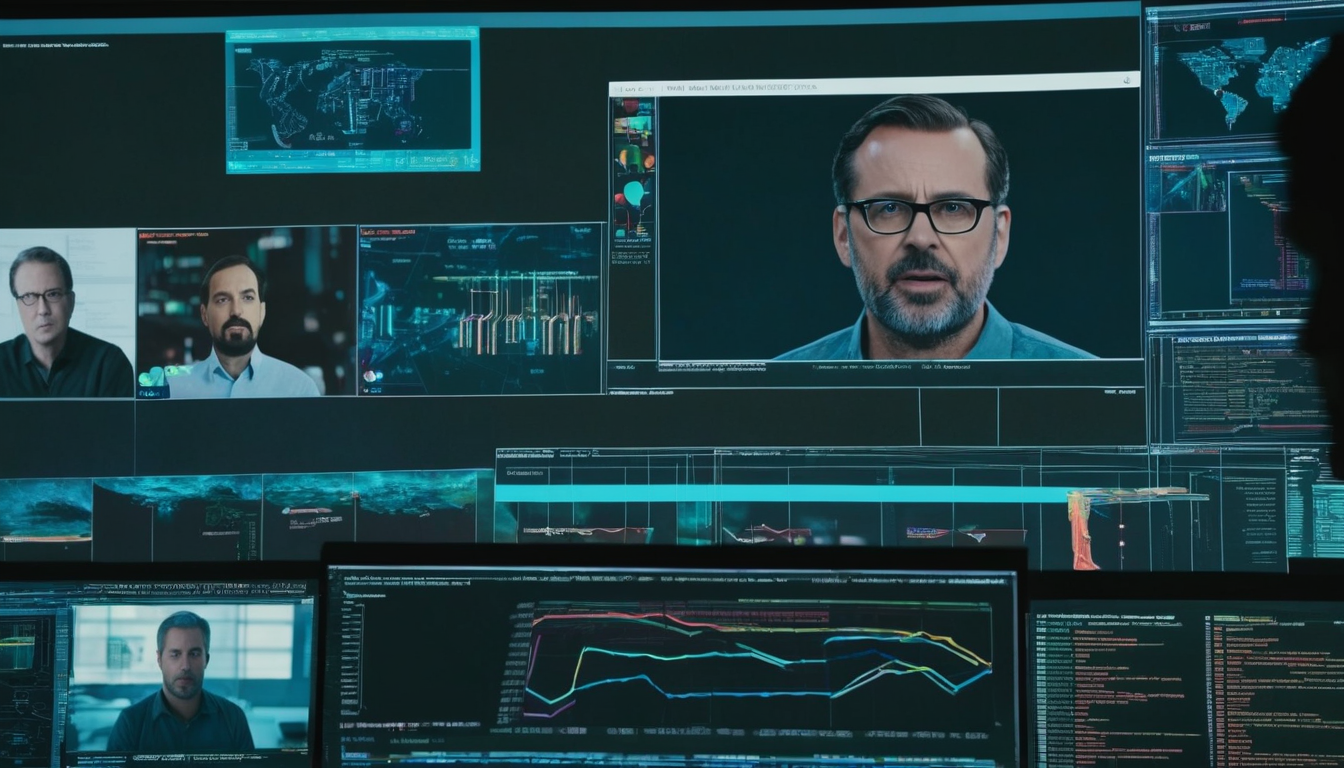
Deepfake Technology
has taken the digital world by storm, creating hyper-realistic fake videos and audio that can fool even the most discerning eyes and ears. Imagine watching a video of a public figure saying something outrageous, only to discover later that it was entirely fabricated. This technology, while fascinating, poses significant risks that we cannot ignore.
On one hand, deepfakes can be used for entertainment purposes, like creating hilarious parodies or enhancing movie productions. However, the darker side of this technology raises alarming questions about misinformation, identity theft, and the erosion of trust in media. As deepfakes become more sophisticated, they challenge our ability to discern fact from fiction. It’s like living in a world where every video could be a carefully crafted illusion.
To better understand the impact of deepfake technology, let’s take a look at some potential applications and their implications:
| Application | Potential Benefits | Risks |
|---|---|---|
| Entertainment | Enhanced storytelling and creative content | Misleading audiences, creating false narratives |
| Political Satire | Humorous takes on current events | Manipulating public opinion, spreading false information |
| Identity Theft | None | Severe privacy violations, financial fraud |
The implications of deepfake technology extend beyond entertainment. It can be a powerful tool in the hands of malicious actors. For example, a deepfake could be used to create a fake video of a politician making inflammatory statements, potentially swaying public opinion or inciting unrest. This is a clear illustration of how the line between reality and fabrication is becoming increasingly blurred.
Moreover, the rapid evolution of raises ethical concerns. Who is responsible when a deepfake is used to harm someone’s reputation? What measures can be put in place to protect individuals from such manipulations? These are questions that society must grapple with as this technology continues to develop.
In conclusion, while deepfake technology offers innovative possibilities, it also presents significant challenges that we must address. As we navigate this brave new world, it’s crucial to foster awareness and establish guidelines that can help mitigate the risks associated with deepfakes. Will we be able to strike a balance between innovation and ethical responsibility? Only time will tell.
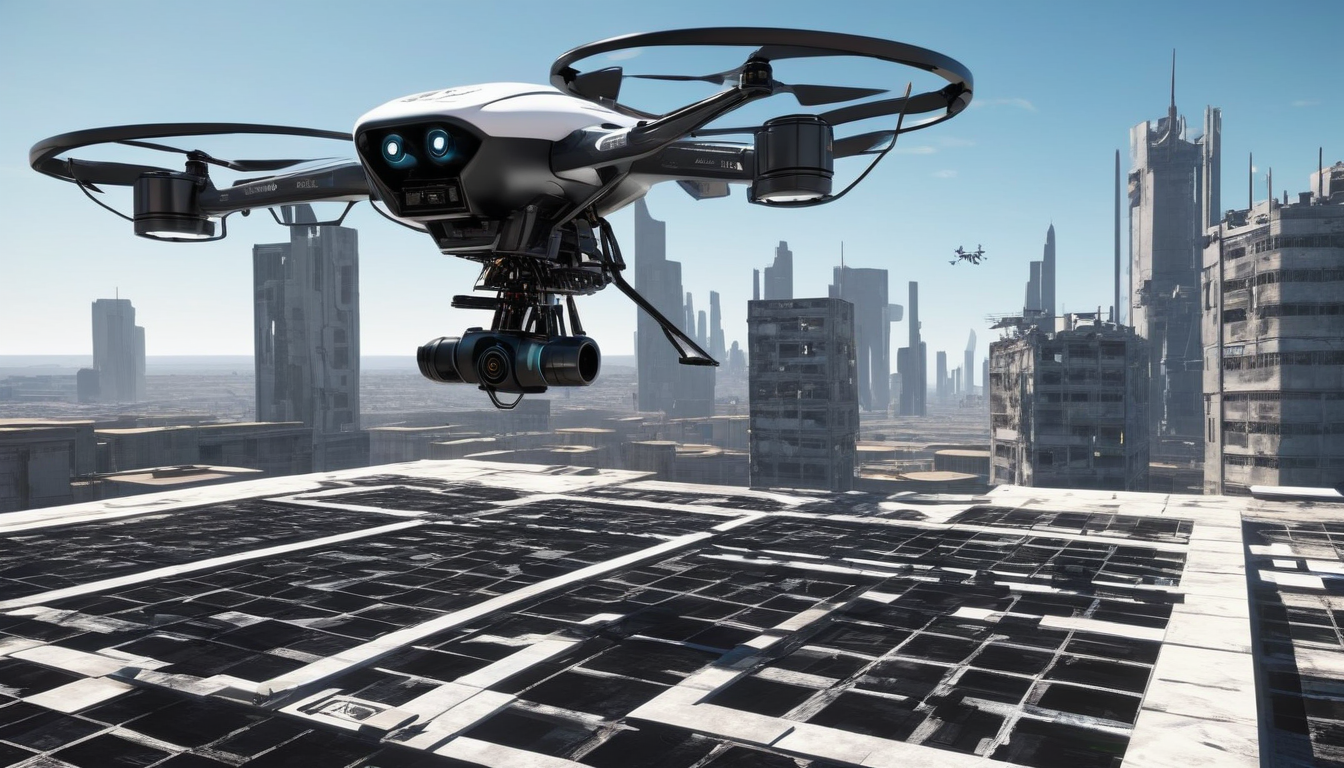
Autonomous Weapons
The development of systems has ignited a firestorm of debate among ethicists, technologists, and policymakers alike. Imagine a battlefield where machines, devoid of human emotion or moral judgment, make life-and-death decisions in the blink of an eye. Sounds like something out of a sci-fi movie, right? But this is the reality we are rapidly approaching. The potential for these technologies to operate independently raises profound questions about accountability and the very nature of warfare.
One of the most pressing concerns is the ethical implications of allowing machines to make critical decisions. Who is responsible if an autonomous weapon mistakenly targets civilians? The lack of clear accountability could lead to a slippery slope where the line between combatants and non-combatants becomes dangerously blurred. Additionally, the potential for unregulated warfare, where countries could deploy autonomous systems without human oversight, poses a serious threat to global stability.
To illustrate the complexities surrounding autonomous weapons, consider the following table that outlines some of the key arguments for and against their development:
| Arguments For | Arguments Against |
|---|---|
| Increased efficiency and speed in combat scenarios. | Loss of human control over life-and-death decisions. |
| Reduction in military personnel casualties. | Potential for misuse and escalation of conflicts. |
| Enhanced precision in targeting, minimizing collateral damage. | Ethical concerns regarding accountability and responsibility. |
As we delve deeper into this topic, it’s essential to recognize that are not just a technological issue; they are a societal challenge that requires comprehensive dialogue and regulation. The implications extend beyond the battlefield and into the realm of international law and human rights. As we stand on the brink of this technological frontier, we must ask ourselves: Are we ready to relinquish control to machines, and at what cost?
In conclusion, the debate surrounding autonomous weapons encapsulates the broader struggle between technological advancement and ethical responsibility. As we navigate this uncharted territory, it is crucial to engage in open discussions that include diverse perspectives from all stakeholders. Only then can we hope to strike a balance between innovation and the preservation of our fundamental values.
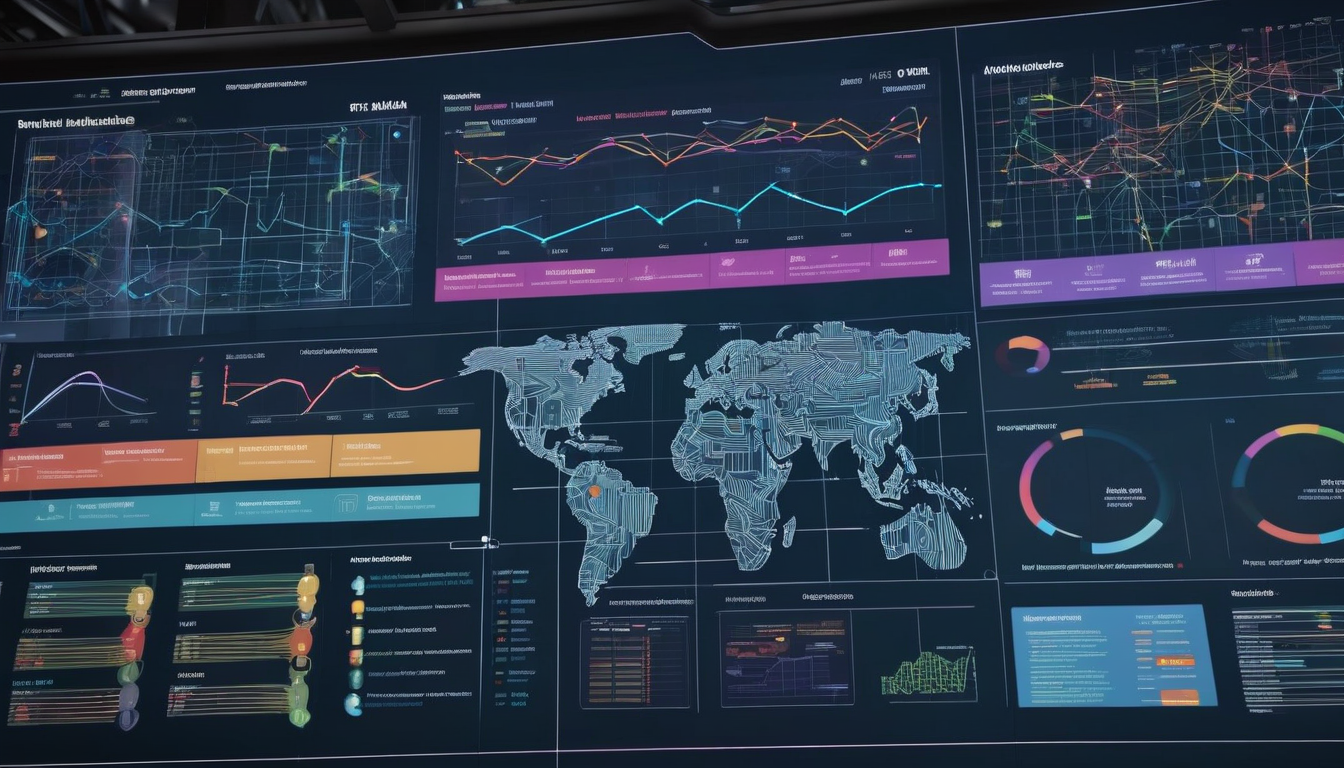
AI in Hiring Practices
In today’s fast-paced job market, has emerged as a game-changer. Companies are increasingly turning to artificial intelligence to streamline their recruitment processes, aiming to save time and resources. However, while the promise of efficiency is enticing, the implications of using AI in hiring raise significant concerns. Are we sacrificing fairness for speed?
One of the most pressing issues is the potential for bias. AI systems learn from historical data, which often reflects past prejudices. For instance, if a hiring algorithm is trained on data from an organization that has historically favored certain demographics, it may inadvertently perpetuate those biases. This can lead to unfair hiring practices, where qualified candidates are overlooked simply because of their background.
A recent study found that nearly 80% of job seekers believe that AI tools can lead to discrimination in hiring. This statistic underscores the need for transparency in how these algorithms operate. Companies must ensure that their AI systems are not only efficient but also equitable.
| Potential Benefits | Drawbacks |
|---|---|
| Increased efficiency in screening resumes | Risk of bias in decision-making |
| Ability to analyze large volumes of applications | Lack of transparency in algorithms |
| Reduction in time-to-hire | Potential for dehumanization of the hiring process |
To combat these issues, companies are urged to adopt a more holistic approach. This includes regularly auditing their AI systems to ensure fairness and implementing guidelines that promote diversity. As we navigate this new landscape, it’s crucial for organizations to engage in open dialogues about the ethical implications of AI in hiring.
In essence, while AI in hiring practices offers remarkable potential for efficiency, it also poses significant ethical challenges. Companies must tread carefully, balancing the benefits of technology with the need for fairness and transparency. As we continue to integrate AI into our lives, the question remains: can we trust machines to make decisions that affect our livelihoods?
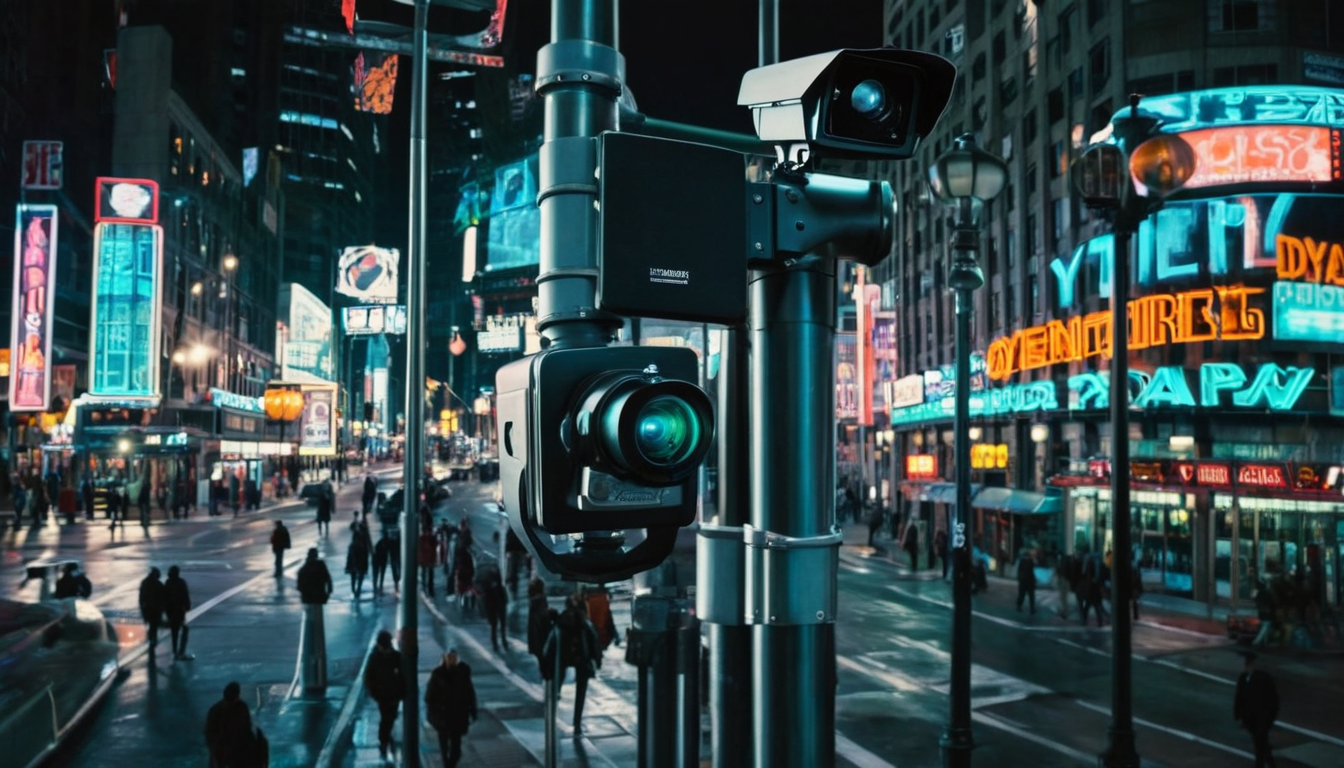
Surveillance Technologies
Surveillance technologies powered by AI have become a hot topic in recent years, igniting debates about privacy, security, and civil rights. As we delve deeper into this digital age, the balance between maintaining safety and protecting individual freedoms becomes increasingly precarious. With tools like facial recognition and predictive policing, we find ourselves at a crossroads where the potential for misuse looms large.
Imagine walking down the street, your every move tracked by a network of cameras equipped with advanced AI. While some argue that these technologies enhance public safety, others raise red flags about the implications for personal privacy. The ability to monitor individuals without their consent can lead to a society where constant oversight becomes the norm, eroding the very freedoms we hold dear.
| Type of Surveillance Technology | Potential Benefits | Drawbacks |
|---|---|---|
| Facial Recognition | Enhances security, assists law enforcement | Privacy invasion, potential for misuse |
| Predictive Policing | Prevents crime, allocates resources effectively | Bias in data, discrimination |
| License Plate Recognition | Helps track stolen vehicles, improves traffic management | Invasive tracking, data retention issues |
Furthermore, the implementation of these technologies often lacks transparency. Who decides how the data is collected, stored, and used? The fear of a surveillance state is not unfounded. As citizens, we need to ask ourselves: Are we willing to trade our privacy for a false sense of security?
Consider the following points when evaluating the impact of AI-driven surveillance technologies:
- Privacy Concerns: The right to privacy is a fundamental human right, yet surveillance technologies can infringe upon this right.
- Data Security: With vast amounts of data being collected, the risk of data breaches and misuse increases.
- Accountability: Who holds the responsibility when surveillance leads to wrongful accusations or actions?
As we navigate this complex landscape, it’s crucial to engage in conversations about the ethical implications of surveillance technologies. Are we prepared to accept the consequences of living in a world where our every move is monitored? The conversation is not just about technology; it’s about the kind of society we want to build.
In conclusion, while AI-powered surveillance technologies offer potential benefits in terms of safety and crime prevention, they also pose significant risks to our privacy and civil liberties. As these technologies continue to evolve, we must remain vigilant and advocate for regulations that protect our rights while balancing the need for security.

Social Media Algorithms
In today’s digital landscape, play a pivotal role in shaping what we see and how we interact online. These algorithms are designed to curate content based on user behavior, preferences, and engagement patterns. While they aim to enhance user experience, they also raise significant concerns regarding the creation of echo chambers and the spread of misinformation. Have you ever wondered why you see certain posts more than others? It’s all thanks to these complex algorithms that prioritize content based on what they predict you will engage with the most.
One of the most pressing issues with social media algorithms is their tendency to reinforce existing beliefs. When users are only exposed to information that aligns with their views, it can create a skewed perception of reality. This phenomenon can be likened to living in a bubble, where outside opinions and facts are filtered out. According to a recent study, approximately 64% of individuals reported that social media platforms contribute to their polarized views.
| Impact of Social Media Algorithms | Positive Effects | Negative Effects |
|---|---|---|
| Content Personalization | Enhances user engagement | Limits exposure to diverse viewpoints |
| Information Dissemination | Quickly spreads important news | Facilitates the spread of misinformation |
| User Retention | Keeps users on the platform longer | Can lead to addiction and mental health issues |
Furthermore, the ethical responsibility of tech companies is under increasing scrutiny. Critics argue that these platforms have a duty to ensure that their algorithms do not promote harmful content or misinformation. Many social media giants are now implementing measures to address these challenges, including:
- Enhancing transparency about how algorithms work
- Incorporating fact-checking mechanisms
- Offering users more control over their feed preferences
In conclusion, while social media algorithms can create a more tailored and engaging experience, they also pose significant risks to our understanding of the world around us. As users, it’s essential to remain vigilant and seek out diverse sources of information to combat the potential pitfalls of these algorithms. After all, a well-rounded perspective is key to navigating the complexities of our digital age.

AI in Healthcare
Artificial Intelligence (AI) in healthcare is a double-edged sword, offering remarkable possibilities while also raising significant ethical concerns. On one hand, AI can revolutionize patient care through enhanced diagnostics, personalized treatment plans, and efficient administrative processes. Imagine a world where doctors can predict health issues before they arise, thanks to sophisticated algorithms analyzing vast amounts of medical data. Sounds like science fiction, right? But it’s becoming a reality!
However, with great power comes great responsibility. The integration of AI into healthcare systems brings forth a plethora of ethical dilemmas. For instance, how do we ensure that patient data is handled with the utmost privacy and consent? The potential for biased outcomes also looms large, as AI systems rely on historical data, which may reflect existing inequalities. This can lead to disparities in treatment recommendations, particularly for marginalized communities.
| Benefits of AI in Healthcare | Ethical Concerns |
|---|---|
| Improved diagnostics and early detection | Data privacy issues |
| Personalized treatment plans | Potential for biased outcomes |
| Streamlined administrative tasks | Lack of transparency in AI decision-making |
Moreover, the question of accountability arises: if an AI system makes a mistake in diagnosis or treatment, who is responsible? Is it the healthcare provider, the software developer, or the institution? These questions create a complex web of ethical considerations that healthcare professionals must navigate.
One of the most thrilling aspects of AI in healthcare is its potential to enhance patient engagement. With AI-driven tools, patients can take a more active role in their health management. For example, wearable devices can monitor vital signs in real time, alerting patients and doctors to potential issues before they escalate. This proactive approach can lead to better health outcomes and a more informed patient population.
In conclusion, while AI in healthcare offers exciting advancements, it also necessitates a careful examination of its ethical implications. As we continue to embrace these technologies, we must prioritize transparency, equity, and accountability to ensure that the benefits of AI are realized without compromising the fundamental rights of individuals.
“The greatest danger in times of turbulence is not the turbulence; it is to act with yesterday’s logic.” – Peter Drucker
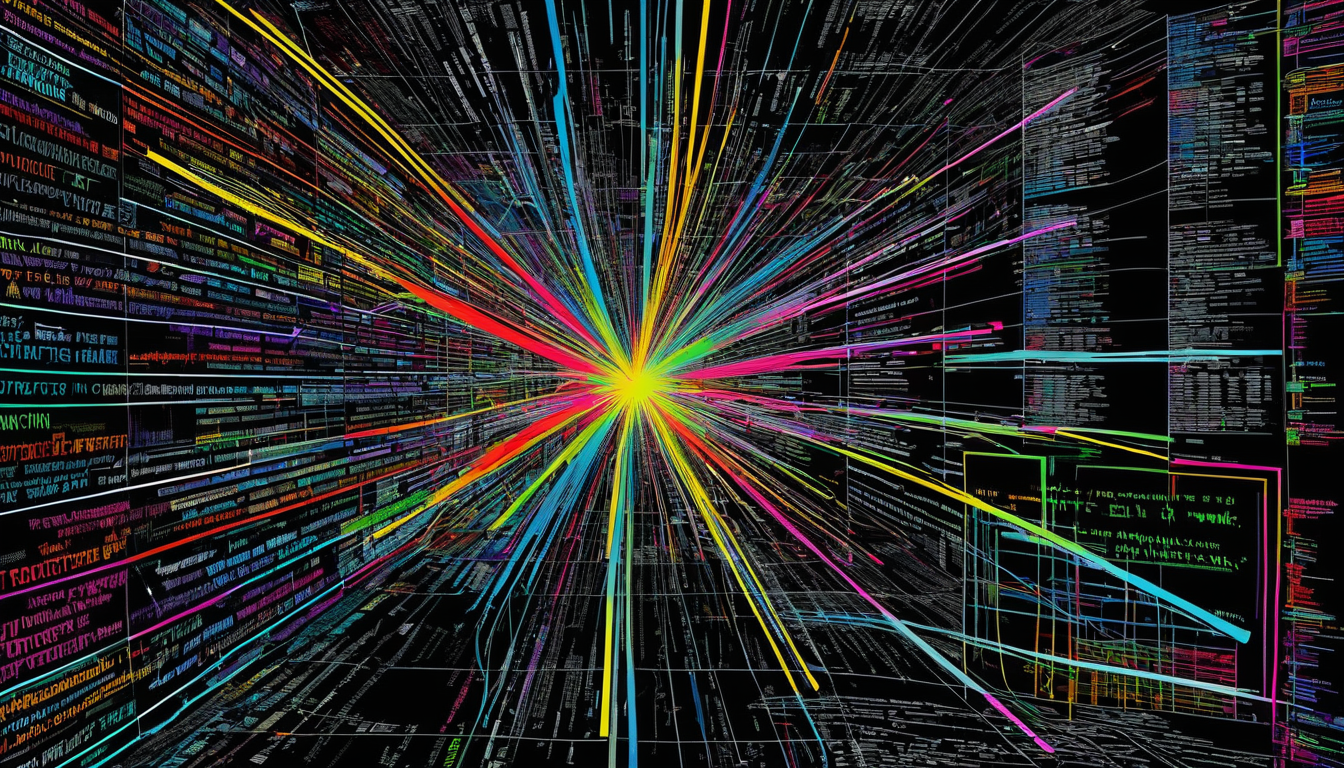
Content Moderation
In the digital age, has emerged as a critical factor in maintaining healthy online communities. As the internet becomes a vast playground for expression, it also attracts harmful content that can negatively impact users. Automated systems, powered by artificial intelligence, are increasingly being deployed to tackle this challenge. However, these systems often struggle with the complexities of human language and context, leading to significant concerns about their effectiveness.
Imagine a world where a simple joke could be flagged as hate speech, or an innocent comment could be misinterpreted as harassment. This is the reality of AI-driven content moderation, where the nuances of human communication can sometimes be lost in translation. While these systems aim to filter out harmful content, they often lack the ability to understand the subtleties that make language rich and diverse.
| Advantages of AI in Content Moderation | Disadvantages of AI in Content Moderation |
|---|---|
| Speed and efficiency in filtering content | Difficulty in understanding context and nuance |
| Ability to monitor vast amounts of data | Potential for over-censorship and false positives |
| Reduction of human labor costs | Lack of accountability and transparency |
Moreover, the ethical implications of are profound. Questions arise about who gets to decide what content is acceptable and what constitutes a violation. This power can lead to censorship and the suppression of free speech. As users, we often find ourselves at the mercy of algorithms that may not fully grasp the essence of our expressions.
To illustrate the challenges of content moderation, consider the following points:
- Context Matters: A phrase that is harmless in one context could be harmful in another.
- Human Oversight: While AI can assist, human moderators are essential for nuanced understanding.
- Transparency is Key: Users should know how moderation decisions are made and have avenues for appeal.
In conclusion, while AI-driven content moderation holds promise for creating safer online spaces, it also raises significant ethical and practical concerns. As technology evolves, so too must our approaches to moderation, ensuring that we strike a balance between safety and freedom of expression. The conversation surrounding is far from over, and it is crucial that we remain vigilant in advocating for responsible practices.

Predictive Analytics
has emerged as a powerful tool in various industries, harnessing the capabilities of artificial intelligence to forecast trends and behaviors. Imagine being able to predict customer preferences or potential market shifts before they happen! Sounds like something out of a sci-fi movie, right? However, as exciting as it is, the use of predictive analytics brings its own set of ethical dilemmas, especially in sensitive areas like criminal justice and finance.
The essence of predictive analytics lies in its ability to analyze vast amounts of data to identify patterns. For instance, companies can utilize this technology to enhance their marketing strategies by understanding customer behavior. However, this raises a crucial question: Are we crossing the line into the realm of profiling? When data is used to make assumptions about individuals or groups, it can lead to reinforcing existing biases.
Consider the following implications of predictive analytics:
- Profiling Risks: Predictive models can inadvertently reinforce stereotypes, leading to unfair treatment in areas like lending and law enforcement.
- Lack of Transparency: Many algorithms operate as a “black box,” making it difficult to understand how decisions are made.
- Data Privacy Concerns: Collecting and analyzing personal data raises significant privacy issues, particularly when individuals are unaware of how their information is being used.
The ethical implications are further complicated when we consider the potential for systemic biases. If the data fed into these models reflects historical inequalities, the predictions made will likely perpetuate those same issues. For example, in the criminal justice sector, predictive policing tools have been criticized for disproportionately targeting marginalized communities based on biased historical data.
| Industry | Application of Predictive Analytics | Ethical Concerns |
|---|---|---|
| Finance | Credit scoring and risk assessment | Discrimination based on biased data |
| Healthcare | Predicting patient outcomes | Data privacy and consent issues |
| Law Enforcement | Predictive policing | Reinforcing systemic biases |
As we continue to embrace the power of predictive analytics, it’s crucial to engage in ongoing discussions about its ethical implications. Should we prioritize innovation over individual rights? Or is it possible to strike a balance that allows us to leverage data while safeguarding privacy? The answers to these questions will shape the future of predictive analytics and its role in society.
In conclusion, while predictive analytics can offer remarkable insights and efficiencies, it’s essential to remain vigilant about the ethical responsibilities that come with it. As we navigate this complex landscape, we must ensure that technology serves to empower rather than marginalize.

AI in Education
The integration of is transforming the way students learn and teachers instruct. Imagine a classroom where lessons adapt in real-time to each student’s learning pace and style! This is not just a dream; it’s becoming a reality thanks to advancements in artificial intelligence. However, as we embrace these innovations, we must also confront the challenges they bring. From data privacy concerns to potential biases in algorithmic assessments, the road ahead is both exciting and fraught with ethical dilemmas.
One of the most significant advantages of AI in education is its ability to provide personalized learning experiences. By analyzing a student’s performance, AI systems can tailor educational content to meet individual needs. For instance, if a student struggles with mathematics, AI can offer additional resources and practice problems specifically designed to address those weaknesses. This level of customization can lead to improved outcomes and a more engaging learning environment.
| Benefits of AI in Education | Challenges of AI in Education |
|---|---|
| Personalized learning experiences | Data privacy concerns |
| Efficient administrative tasks | Algorithmic bias in assessments |
| Access to global resources | Equity in access to technology |
However, the implementation of AI is not without its pitfalls. Data privacy is a major concern, as educational institutions collect vast amounts of personal information from students. This data can be vulnerable to breaches, raising questions about who has access to sensitive information and how it is used. Moreover, the algorithms that power AI tools are often trained on historical data, which can perpetuate existing biases. This means that students from underrepresented backgrounds may not receive the same level of support as their peers, leading to inequities in education.
Furthermore, as AI systems become more prevalent, there is a growing concern about the equity of access. Not all students have the same access to technology, which can create a divide between those who benefit from AI-enhanced learning and those who do not. This disparity could widen the achievement gap, making it crucial for policymakers to address these issues proactively.
In conclusion, while the incorporation of holds incredible potential for enhancing learning experiences, it is essential to navigate the accompanying challenges carefully. As we move forward, we must ensure that the benefits of AI are accessible to all students, fostering an inclusive and equitable educational landscape.
“The future of education is not just about technology; it’s about how we use technology to empower every learner.” – Anonymous
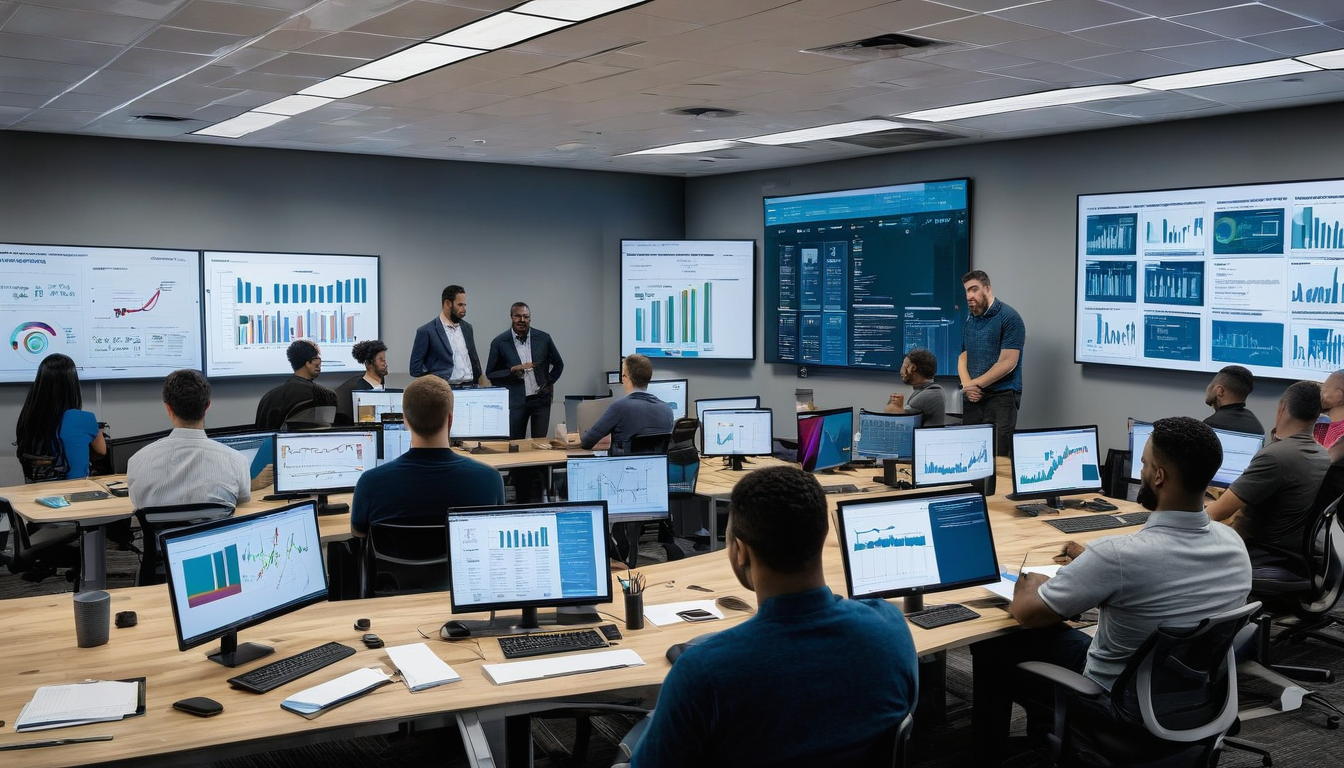
Job Displacement
The rise of AI technologies has sparked a whirlwind of discussions about across various industries. As machines become more capable of performing tasks that once required human intelligence, many workers are left wondering: what does the future hold for their jobs? The reality is that while AI can boost productivity and efficiency, it also poses significant challenges for the workforce.
Consider this: according to a report by the World Economic Forum, it’s estimated that by 2025, machines and algorithms will displace around 85 million jobs globally. However, they will also create about 97 million new roles that are better suited to the new division of labor between humans and machines. This paradox raises vital questions about the skills workers will need and how quickly they can adapt.
| Year | Jobs Displaced | New Jobs Created |
|---|---|---|
| 2025 | 85 million | 97 million |
So, what can be done to mitigate the impact of job displacement? Here are some strategies:
- Reskilling and Upskilling: Workers must be equipped with new skills to thrive in an AI-driven job market. This means investing in education and training programs that focus on digital literacy and advanced technical skills.
- Support Systems: Governments and organizations should establish safety nets for displaced workers, including unemployment benefits and job placement services.
- Collaboration: Businesses and educational institutions need to work together to align curricula with industry needs, ensuring that the workforce is prepared for the future.
It’s essential to recognize that the transition to an AI-driven economy won’t happen overnight. As we navigate this shift, the ethical responsibility of companies becomes paramount. They must consider the human impact of their technological advancements. After all, the goal should not only be to innovate but also to ensure that the workforce is not left behind.
In conclusion, while AI promises to revolutionize industries and create new opportunities, we must tread carefully. The conversation around is not just about numbers; it’s about people, families, and communities. As we embrace the future, let’s ensure that we do so with foresight and compassion.

AI and Climate Change
As the world grapples with the escalating threat of climate change, AI technologies emerge as a double-edged sword. On one hand, they offer innovative solutions to mitigate environmental challenges; on the other, they pose significant questions about sustainability and ecological responsibility. Imagine AI as a powerful tool in a craftsman’s hands—it can build, but if misused, it can also destroy.
AI can play a pivotal role in addressing climate change through various applications. For instance, it can analyze vast amounts of data to optimize energy consumption, predict weather patterns, and even enhance carbon capture technologies. However, the environmental impact of AI itself must not be overlooked. The energy required for training complex AI models can be substantial. Here’s a breakdown:
| AI Application | Potential Benefit | Environmental Concern |
|---|---|---|
| Energy Optimization | Reduces overall energy consumption | High computational energy use |
| Predictive Analytics in Agriculture | Improves crop yields and reduces waste | Resource-intensive data processing |
| Smart Grids | Enhances efficiency of energy distribution | Infrastructure development impacts |
Moreover, the integration of AI in environmental initiatives can be categorized into several key areas:
- Renewable Energy Management: AI systems can forecast energy production from renewable sources like solar and wind, allowing for better integration into the grid.
- Climate Modeling: Advanced algorithms can simulate and predict climate patterns, helping policymakers make informed decisions.
- Wildlife Conservation: AI-powered drones and cameras can monitor endangered species and detect poaching activities more effectively.
However, the question remains: how do we balance the benefits of AI with its ecological footprint? As the renowned environmentalist David Attenborough once said, “The truth is: the natural world is changing and we are totally dependent on that world. It provides our food, water, and air.” This highlights the urgency of ensuring that our technological advancements do not come at the expense of our planet.
In conclusion, while AI holds immense potential to combat climate change, we must tread carefully. The development of AI technologies should be accompanied by a commitment to sustainability, ensuring that we are not only innovating but also preserving the very environment we seek to protect. As we move forward, let’s remember that our tools should serve as allies in the fight against climate change, not adversaries.
Frequently Asked Questions
- What are the main concerns regarding facial recognition technology?
Facial recognition technology raises significant privacy concerns. People worry about how it is used in surveillance and law enforcement, potentially infringing on civil liberties and individual consent. There’s a fear of misuse, where individuals could be tracked without their knowledge, making it a hot topic for debate.
- How does deepfake technology impact trust in media?
Deepfake technology can create hyper-realistic fake videos and audio, which, while entertaining, poses serious risks. It can lead to misinformation and identity theft, eroding public trust in media. Imagine seeing a video of a public figure saying something outrageous—how can we be sure it’s real?
- What ethical dilemmas are associated with autonomous weapons?
The development of autonomous weapons introduces complex moral dilemmas. The main concern is accountability—if a machine makes a life-and-death decision, who is responsible? This raises questions about the ethics of unregulated warfare and the implications for human life.
- Are AI-driven hiring practices fair?
While AI in hiring can enhance efficiency, it often perpetuates existing biases found in historical data. This raises serious concerns about fairness and discrimination, as candidates may be evaluated without transparency, leading to unequal opportunities.
- What are the implications of AI-powered surveillance technologies?
AI-driven surveillance technologies, like predictive policing, spark controversy due to their potential to infringe on privacy and civil rights. The challenge lies in balancing security needs with personal freedom, making it a contentious issue in society.
- How do social media algorithms affect user experience?
Social media algorithms curate content based on user behavior, which can create echo chambers and spread misinformation. This raises concerns about mental health and the ethical responsibility of tech companies to ensure a healthy online environment.
- What are the ethical concerns surrounding AI in healthcare?
AI can revolutionize healthcare with improved diagnostics and personalized treatment. However, ethical issues arise regarding data privacy, consent, and the risk of biased outcomes in patient care, making it essential to tread carefully.
- How does AI-driven content moderation work?
AI-driven content moderation aims to filter harmful online content but often struggles with context and nuance. This leads to debates about censorship and freedom of expression, questioning the reliability of automated systems.
- What are the risks of predictive analytics?
While predictive analytics can forecast trends and behaviors, its use in areas like criminal justice and finance raises ethical concerns about profiling. There’s a danger of reinforcing systemic biases, which can have serious implications.
- How is AI impacting education?
The integration of AI in education offers personalized learning experiences, but it also presents challenges related to data privacy and equity. Concerns about algorithm-driven biases in student assessment are critical as we navigate this new frontier.
- What should we know about job displacement due to AI?
As AI technologies advance, the fear of job displacement grows. Discussions focus on the need for reskilling and the ethical responsibility of companies to manage workforce transitions, addressing the future of work in a changing landscape.
- Can AI help combat climate change?
AI has the potential to address climate change through data analysis and optimization. However, the environmental impact of AI development itself raises questions about sustainability, balancing innovation with ecological responsibility.

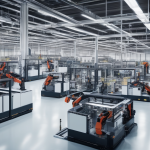












The AI regulation and compliance section is spot on. With the rise of AI adoption, ethical considerations will be crucial.…